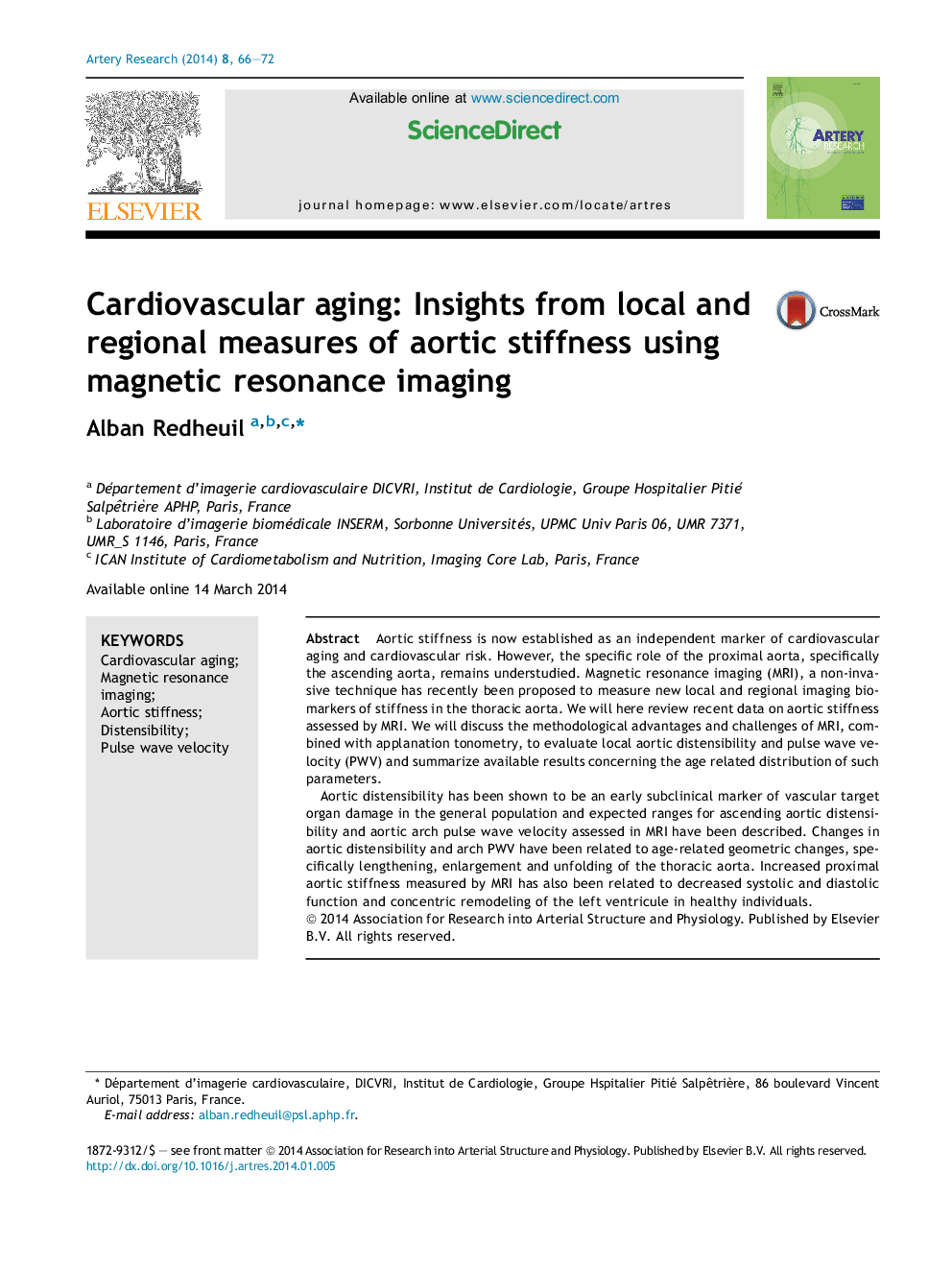| Article ID | Journal | Published Year | Pages | File Type |
|---|---|---|---|---|
| 2891916 | Artery Research | 2014 | 7 Pages |
Aortic stiffness is now established as an independent marker of cardiovascular aging and cardiovascular risk. However, the specific role of the proximal aorta, specifically the ascending aorta, remains understudied. Magnetic resonance imaging (MRI), a non-invasive technique has recently been proposed to measure new local and regional imaging biomarkers of stiffness in the thoracic aorta. We will here review recent data on aortic stiffness assessed by MRI. We will discuss the methodological advantages and challenges of MRI, combined with applanation tonometry, to evaluate local aortic distensibility and pulse wave velocity (PWV) and summarize available results concerning the age related distribution of such parameters.Aortic distensibility has been shown to be an early subclinical marker of vascular target organ damage in the general population and expected ranges for ascending aortic distensibility and aortic arch pulse wave velocity assessed in MRI have been described. Changes in aortic distensibility and arch PWV have been related to age-related geometric changes, specifically lengthening, enlargement and unfolding of the thoracic aorta. Increased proximal aortic stiffness measured by MRI has also been related to decreased systolic and diastolic function and concentric remodeling of the left ventricule in healthy individuals.
